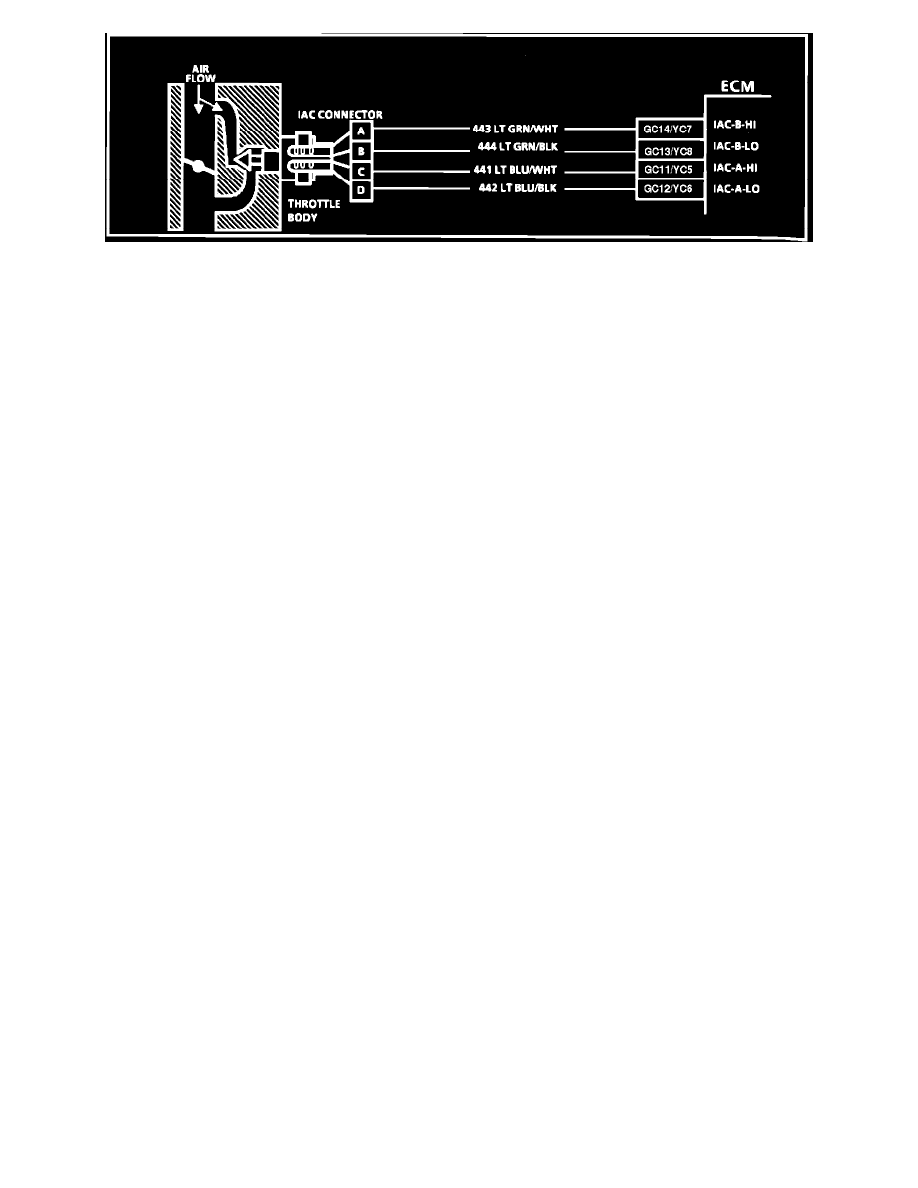Reatta V6-231 3.8L VIN C SFI (1990)

Idle Air Control Circuit
CIRCUIT DESCRIPTION:
The ECM controls idle rpm with the IAC motor. To increase idle rpm, the ECM retracts the IAC pintle from the seat, allowing more air to pass by the
throttle plate. To decrease rpm, it extends the IAC pintle in towards the seat, reducing air flow by the throttle plate. ED22 will read the ECM commands
to the IAC motor in counts. The higher the counts, the more air allowed (higher idle). The lower the counts, the less air allowed (lower idle).
TEST DESCRIPTION: Numbers below refer to circled numbers on the diagnostic chart.
1.
Continue with test, even if engine will not idle. If idle is too low, ED22 will display 80.0 or more counts, or steps. If idle is high, it will display
"O" counts. Occasionally, an erratic or unstable idle may occur. Engine speed may vary 200.0 rpm or more up and down. Disconnect IAC. If the
condition is unchanged, the IAC is not at fault.
2.
When the engine was stopped, the IAC motor retracted (more air) to a fixed "Park" position for increased air flow and idle speed during the next
engine start. ED22 will display 100 or more counts.
3.
Be sure to disconnect the IAC motor prior to this test. The test light will confirm the ECM signals by a steady or flashing light on all circuits.
4.
There is a remote possibility that one of the circuits is shorted to voltage, which would have been indicated by a steady light. Disconnect ECM and
turn the ignition "ON" and probe terminals to check for this condition.
DIAGNOSTIC AIDS:
A slow, unstable idle may be caused by a system problem that cannot be overcome by the IAC.
NOTE: If for some reason the air intake to the engine is restricted the ECM will attempt to compensate by backing out the IAC valve, to maintain
desired idle. This may result in IAC count above 60.0. If the engine has another source of air to the intake, the ECM will compensate by extending the
IAC - IAC counts may be zero as the ECM tries to maintain desired idle.
1.
System lean (High Air/Fuel Ratio) - Idle speed may be too high or too low. Engine speed may vary up and down, disconnecting IAC does not help.
May set code EO44. ED07 and/or voltmeter will read an oxygen sensor output less than 300.0 mV (0.3 volt). Check for low regulated fuel
pressure or water in fuel. A lean exhaust, with an oxygen sensor output fixed above 800.0 mV (0.8 volt), will be a contaminated sensor, usually
silicone. This may also set code EO45.
2.
System rich (Low Air/Fuel Ratio) - Idle speed too low. ED22 counts usually above 80.0. System obviously rich and may exhibit black smoke
exhaust. ED07 and/or voltmeter will read an oxygen sensor signal fixed above 800.0 mV (0.8 volt).
Check
-
High fuel pressure.
-
Injector leaking or sticking.
3.
Throttle Body - Remove IAC and inspect bore for foreign material or evidence of IAC motor dragging the bore.
